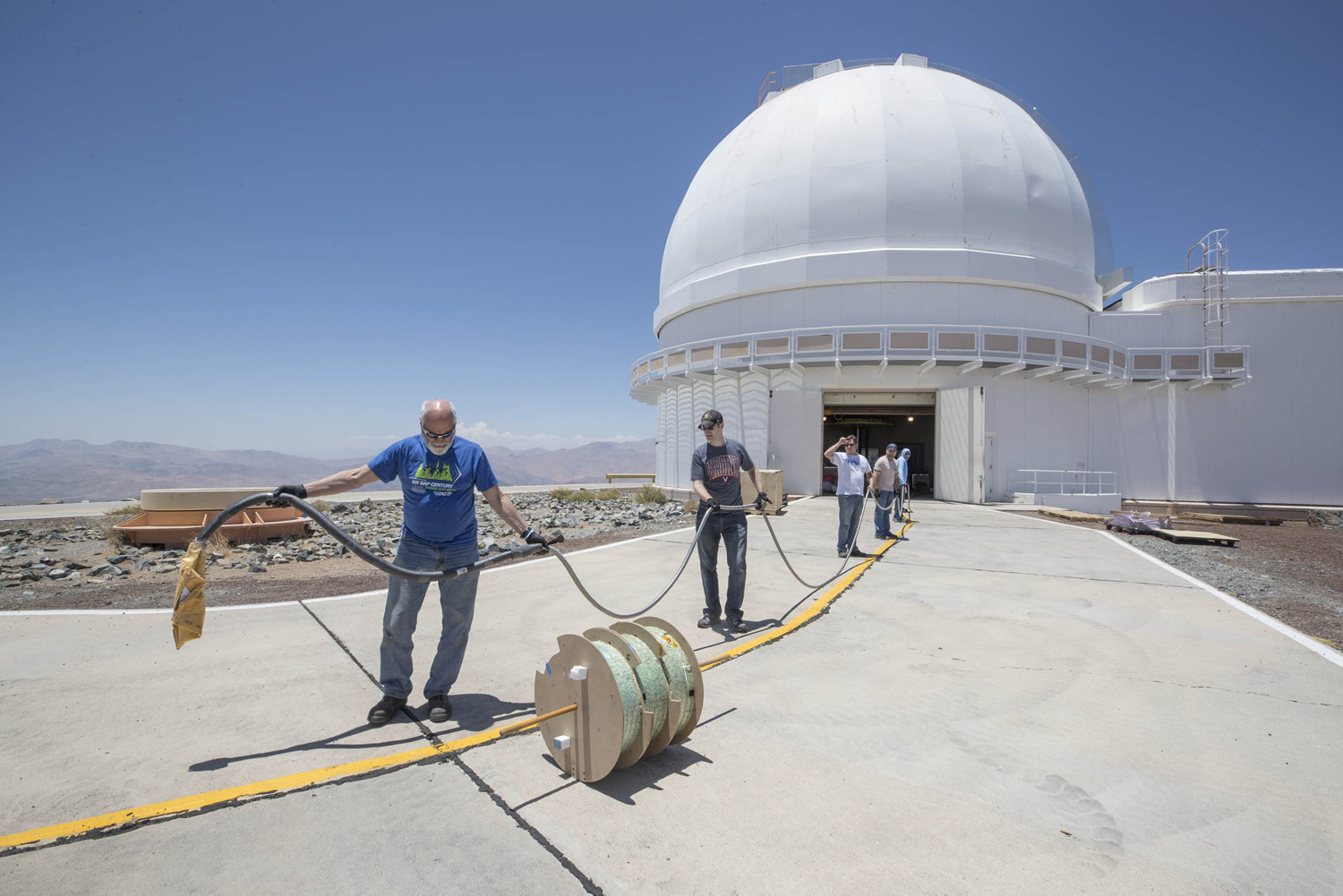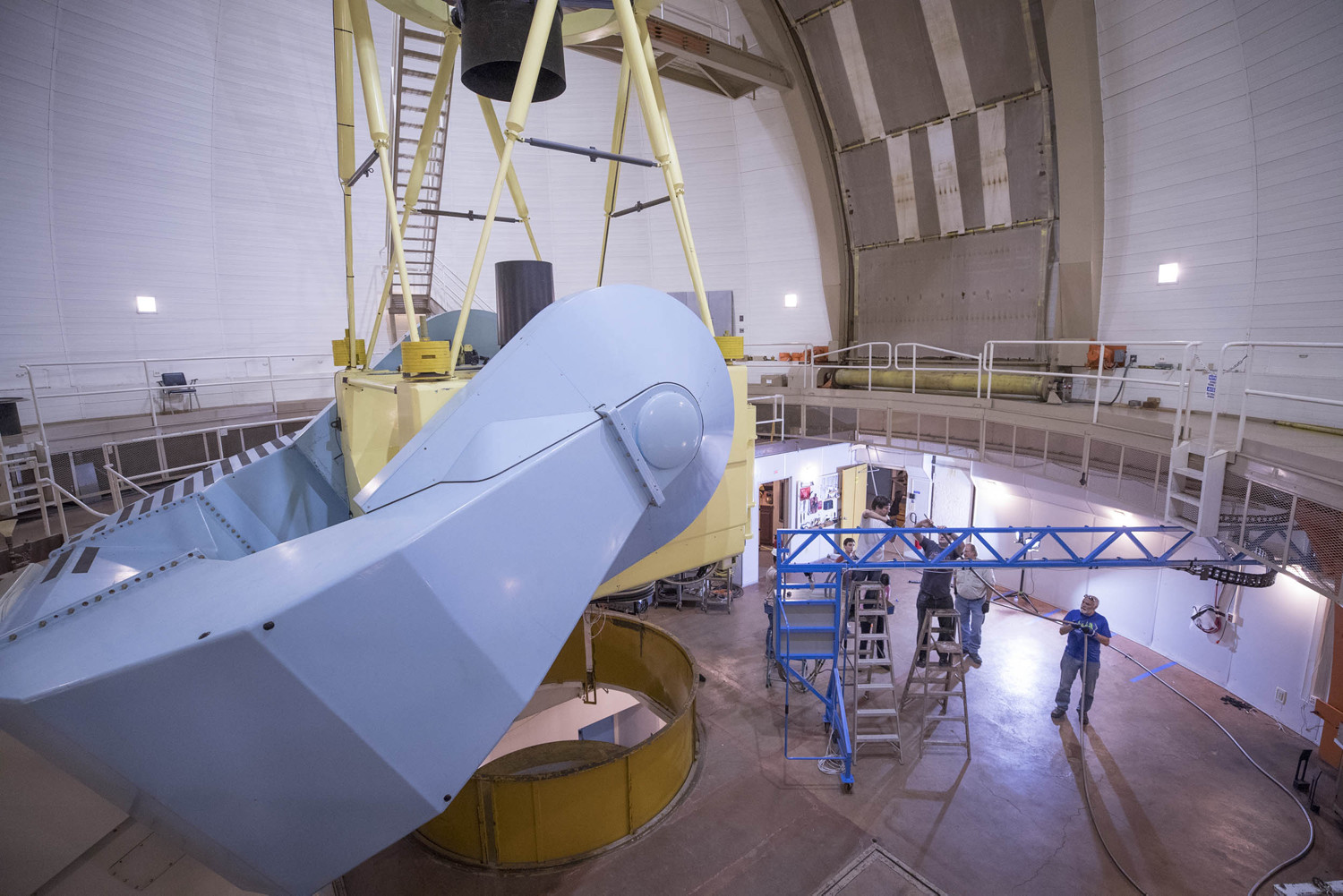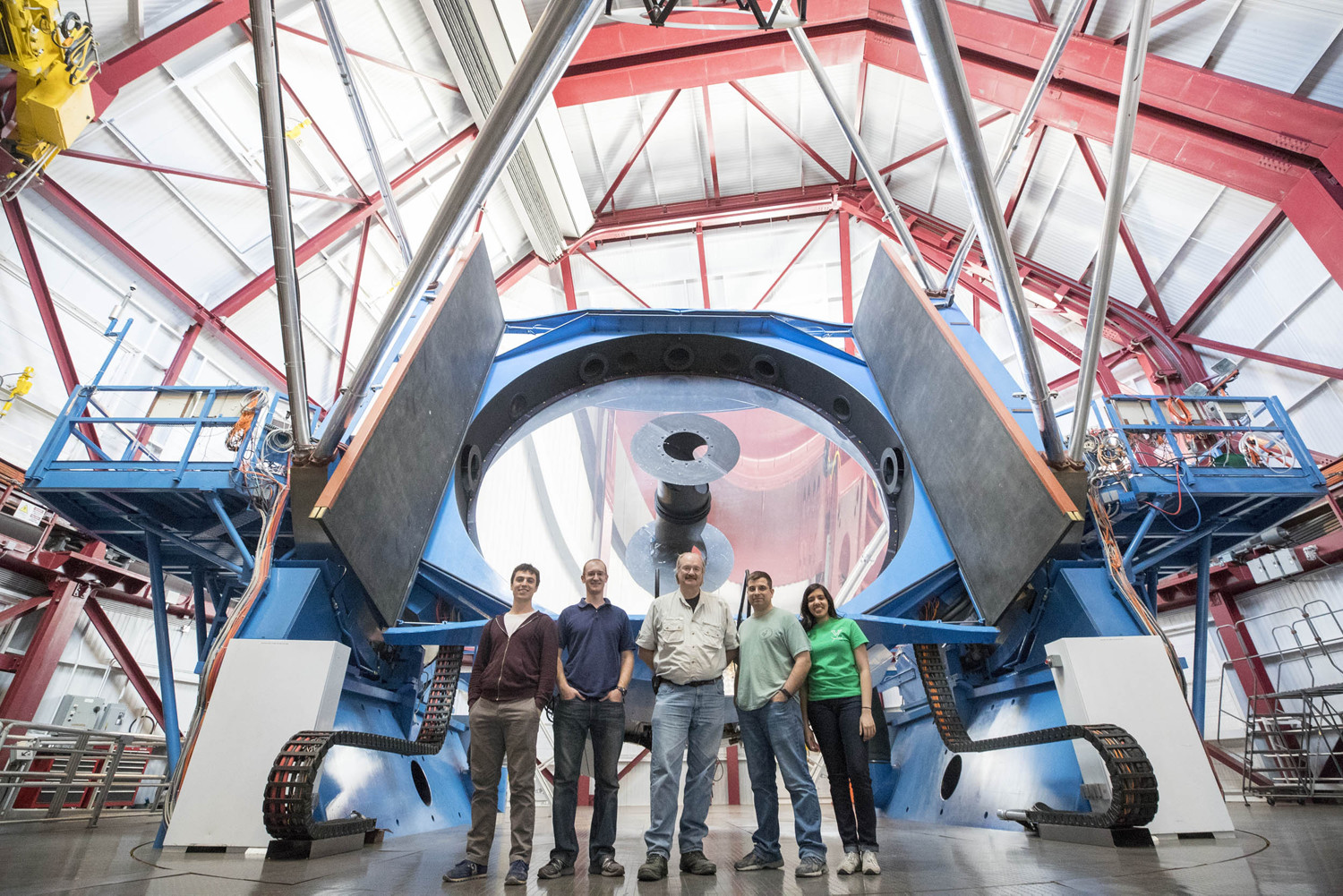After more than two years of work constructing a two-ton astronomical instrument known as APOGEE-South, University of Virginia astronomers this week are at Chile’s Las Campanas Observatory installing the $6 million infrared spectrograph.
This device will allow astronomers to peer through dense cosmic dust scattered through the Milky Way and view stars at the farthest reaches of our home galaxy. The instrument, which is being attached to the wide-field du Pont telescope, will be commissioned in the middle of February.
UVA photographer Sanjay Suchak is in Chile documenting the installation. He is with UVA astronomers who, under the leadership of professors Steven Majewski and Michael Skrutskie with UVA instrument scientist John Wilson, proposed for, designed and built APOGEE-South as a Southern Hemisphere complement to a similar instrument they also designed and built several years ago for the Apache Point Observatory in New Mexico.
The new instrument, which endured an 8,000-mile, two-month journey by land, air and sea to Chile, will allow observation of stars in the Milky Way that are difficult or impossible to observe from the Northern Hemisphere. The infrared-sensitive spectrograph, which operates at wavelengths longer than optical light, allows astronomers to examine the chemical composition and motions of hundreds of thousands of stars that otherwise – because of obscuring interstellar dust – would not be readily visible optically.
Using data from both devices, astronomers soon will achieve a much fuller view of the Galaxy, gaining new insights to how the Milky Way formed, how it is evolving, and by implication how other, similar galaxies formed. Used in conjunction with other telescopes and instruments worldwide, the APOGEE project also is helping astronomers identify potential planets in other solar systems.
APOGEE-South will operate well into the 2020s, gathering enough data to keep international astronomers busy for decades.

The UVA team spooled out the delicate fiber-optic cable that runs from the instrument to the telescope.
UVA astronomers built APOGEE-South in collaboration with scientists from around the world and set up its infrastructure at Las Campanas with help from Chilean colleagues, funded in part through a grant from the UVA Center for Global Inquiry. The Alfred P. Sloan Foundation and an international consortium of dozens of research universities, including UVA, as well as the Carnegie Institution for Science, which owns and operates the telescopes at Las Campanas, contributed to the construction of the instrument and for its operation.
The UVA instrument team includes former UVA students and other astronomy department lab members. The work was largely conducted in the UVA astronomical instrumentation lab, which was established 15 years ago by department chair Michael Skrutskie.

The team from UVA worked in the telescope dome room on the arm and connection for the spectrograph as part of the APOGEE project.
Media Contact
Article Information
January 20, 2017
/content/charlottesville-chile-powerful-apogee-ready-starring-role

